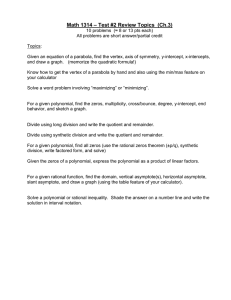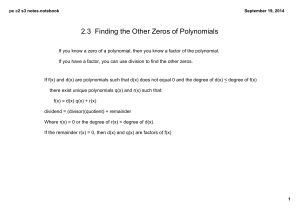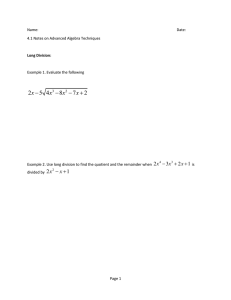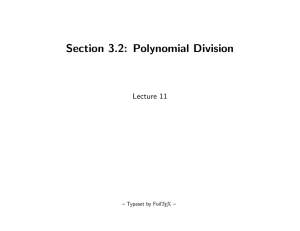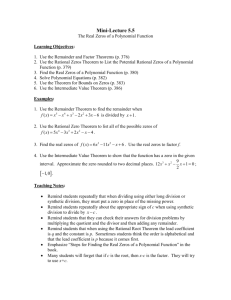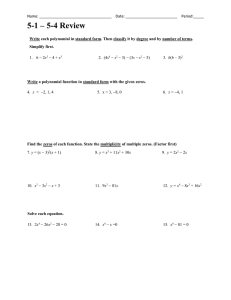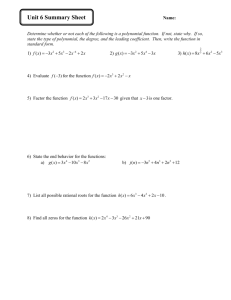Quiz Review Questions - Miss Sahady PSHS Class Website
advertisement
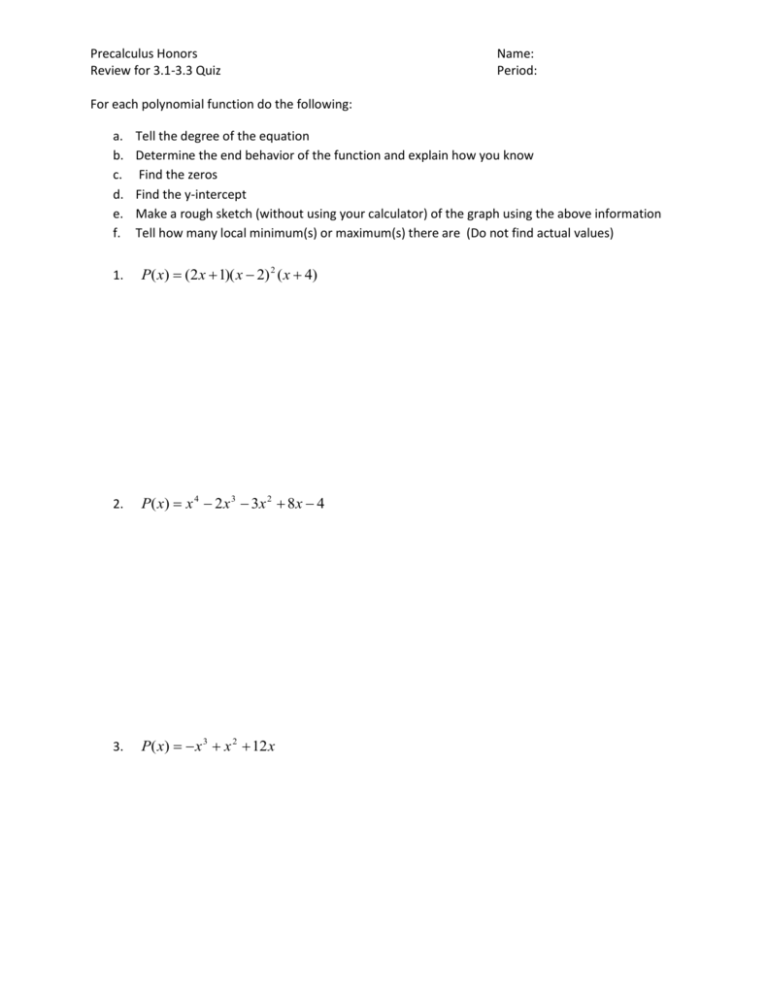
Precalculus Honors Review for 3.1-3.3 Quiz Name: Period: For each polynomial function do the following: a. b. c. d. e. f. Tell the degree of the equation Determine the end behavior of the function and explain how you know Find the zeros Find the y-intercept Make a rough sketch (without using your calculator) of the graph using the above information Tell how many local minimum(s) or maximum(s) there are (Do not find actual values) 1. P( x) (2 x 1)( x 2) 2 ( x 4) 2. P( x) x 4 2 x 3 3 x 2 8 x 4 3. P( x) x 3 x 2 12 x 3x 4 5 x 3 20 x 5 x2 x 3 4. Use long division to find the quotient and the remainder of 5. Use synthetic division to find the quotient and the remainder of 6. Explain how you can evaluate P(4) given P( x) x 3 2 x 2 2 x 1 WITHOUT 3x 3 12 x 2 1 x5 plugging 4 into the equation. (Application for Synthetically dividing by x-4) 7. When we divide a third degree polynomial, P(x), by x + 3, the bottom line of the synthetic division problem looks like 4 6 -2 0. a. What is the Quotient (answer) to this problem? b. What do you learn from the 0? (Factor Theorem) 8. When we divide a fourth degree polynomial, P(x), by x – 6, the bottom line of the synthetic division problem looks like -2 7 0 1 3. a. What are the quotient and the remainder? b. What do you learn from the 3? (Remainder Theorem) 9. Given the polynomial P( x) x 3 4 x 2 7 x 10 , a. Name all the possible rational roots (Rational Root Theorem b. Find out which of the choices in part a are actual roots (zeros) of P(x) 10. Find a polynomial with a degree of 3 with the following zeros: 2, -5, 0 11. Given the graph below, a. Estimate the zeros b. Estimate the local extrema c. Describe the intervals where the function is increasing and decreasing using interval notation d. Write the function for the graph of P(X). (you are going to have to find the slope a by plugging the point (0,1.5) into your function and dividing 1.5 by your constant coefficient, keep it as a fraction, and distribute it to your function terms) (0,1.5) 12. Find all the real zeros of the polynomial. (Use the quadratic formula or complete the square to find the last two if necessary.) Show your work. Do not use the calculator. a. P( x ) x 3 x 2 6 x 6 b. P( x) x 3 4 x 2 3 x 2 c. P( x ) 4 x 3 7 x 3
